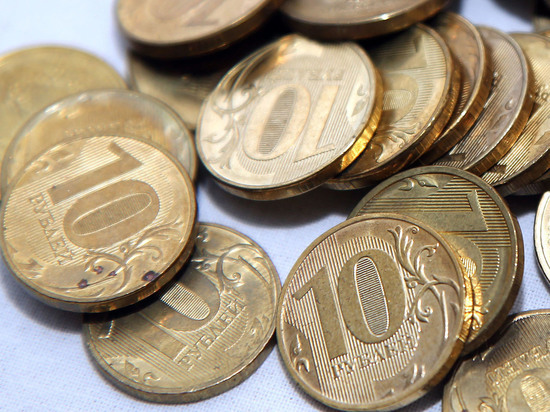The ruble collapsed in anticipation of an even worse scenario
[ad_1]

The introduction of a ceiling on oil prices is not the main reason for the depreciation of the national currency
The ruble lost more than 10% of its value against the dollar and the euro in the first week of December, which threatens to become a new currency reality by the end of the year. From May to November, Russia lived with a dollar exchange rate of about 60 rubles, and the American and European currencies reached parity in the summer. But now that page has been turned.
Judging by what is happening on the stock exchange, the ruble will end the year retreating. Its weakening, as experts have repeatedly pointed out, is good for the budget, but it is unlikely that the authorities wanted to have such an effect against the backdrop of a reduction in energy exports due to the introduction of a ceiling on oil prices and an embargo on its supplies. Experts told MK about what will happen to the ruble by the end of the year and why.
The dollar exchange rate on the Moscow Exchange for the first time since mid-October rose to 63 rubles, and the euro is trading at 66 rubles, which was the highest figure in five months – the last time the European currency was at this mark on July 6.
The main negative this week was the news about sanctions affecting the energy market. On December 5, an embargo was introduced on offshore deliveries of Russian oil to the EU and a price ceiling of $60 per barrel was set for its export.
“The ruble is weakening on expectations of a reduction in foreign exchange earnings from the sale of oil in connection with the introduction of a price ceiling,” believes Alfa Capital analyst Alexander Dzhioev. On the other hand, it is probably early to talk about this in December, because in fact, restrictions on the cost of “black gold” will only come into effect from January 2023, since they imply a 45-day transition period, that is, until the end of the year, all buyers of Russian oil should get it unhindered. In addition, according to the head of the analytical department of the BKF Bank, Maxim Osadchy, although the oil ceiling helps to reduce the inflow of dollars into the Russian economy and thereby leads to a weakening of the ruble, this effect is mitigated by the fact that Russian oil is sold in Asia at prices well above $60.
It turns out that other reasons make the domestic currency cheaper. “At the end of the year, the ruble, as a rule, weakens, as budget money appears on the currency exchange,” said Andrey Vernikov, financial expert. — This year, in December, there was a strong decline in oil prices, and the first reaction of investors is traditionally to sell oil stocks and buy foreign currency. I think that, taking into account the planned deficit budget and the new design of the budget rule, which will be introduced in stages, starting from 2023, we should expect a gradual weakening of the ruble.” The expert suggests not to be surprised if next year the dollar will be in the range of 65-75 rubles.
The reason for the weakening of the domestic currency may also be the situation with oil in general, which is not related to anti-Russian sanctions. “The main reason for the weakening of the ruble is the fall in oil prices below $80 per barrel, this is a very important psychological level,” said Natalia Milchakova, lead analyst at Freedom Finance Global. – The dollar and the euro, in addition, are strengthening not only against the ruble, but also against the currencies of developing countries after the release of strong macroeconomic data in the US and the eurozone. The easing of anti-covid restrictions in China, along with expectations of interest rate cuts by the People’s Bank of China, are driving the yuan’s appreciation against the ruble.” The news about the price ceiling for Russian oil on the ruble, most likely, no longer affects. Apparently, the world market is afraid that, despite the restrictions imposed, Russia will not reduce the supply of “black gold” too much, and there may be a surplus of oil.
Will we see the dollar and the euro before the end of December at 70 rubles and more? “We believe that a reverse movement to the levels of 60-62 rubles per dollar and 61-64 rubles per euro is more likely than a movement towards 70 rubles,” the expert emphasized. — For example, the ruble may respond by strengthening to the decision of the Fed on the interest rate, which will be announced on December 14, if it is raised only by 0.5%.
Also, the currency market will be waiting for the decision of the Central Bank of the Russian Federation on the key rate, which will be announced on December 16, but the reaction of the ruble to it will most likely depend on the nature of the accompanying comments.
At the end of the month, the ruble may be affected by the tax period, which usually suspends the strengthening of the dollar and the euro. In the meantime, there is no positive news for the ruble, and oil is falling, world reserve currencies may continue to rise against the ruble. The dollar can reach the level of 63.5-64 rubles in the coming days, the euro can rise in price to 67-68 rubles, Milchakova said.
[ad_2]
Source link






